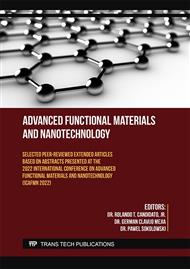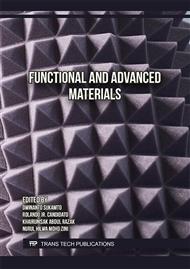p.89
p.97
p.105
p.113
p.125
p.133
p.141
p.169
p.179
A Method for In Vivo Dosimetry Using an Electronic Portal Imaging Device
Abstract:
The implementation of advanced radiotherapy techniques such as Intensity-Modulated RadiationTherapy (IMRT) and Volumetric Modulated Arc Therapy (VMAT) allows much more accuratecontrol of the irradiation area and more conformal dose delivery. Since these treatments are characterizedby high dose gradients and hence small error margins, they also require advanced and highlyeffective treatment verification techniques. Fortunately, an imaging modality, originally intended forset-up verifications, called the Electronic Portal Imaging Device (EPID) was reported to have hugepotential for dosimetry and treatment verification applications. However, methods and algorithmspreviously developed for EPID dosimetry are not yet widely adopted in cancer centers due to complexitiesin the implementation. These motivate more investigation and development of new methodsto encourage cancer centers to practice EPID dosimetry and improve patient safety.This research generally aims to develop an in-vivo dosimetry method that can be used in the future toapproximate the actual dose delivered inside the target by utilizing the transmitted fluence detectedby the EPID. In this study, Monte Carlo simulations are carried out using the Geant4 Application forTomographic Emission (GATE) to implement a virtual set-up composed of a water target irradiatedwith a monoenergetic 2 MeV photon beam and an EPID model to detect the total transmitted fluence.A mathematical model has been proposed to calculate the target absorbed dose by utilizing the transmittedprimary fluence. This involves back-projection of the transmitted fluence to determine fluencevalues at certain depths inside the irradiated homogeneous medium. This is followed by the calculationof the collision kerma using the back-projected fluence and the values of the linear attenuation coefficientand mass energy absorption coefficient in the National Institute of Standards and Technology(NIST) database. The results show accurate prediction of the fluence values inside the target, calculationof the corresponding values of the collision kerma, and determination of the proportionalityconstant β that relates the collision kerma to the target absorbed dose.
Info:
Periodical:
Pages:
169-177
Citation:
Online since:
October 2023
Keywords:
Price:
Сopyright:
© 2023 Trans Tech Publications Ltd. All Rights Reserved
Share:
Citation:



